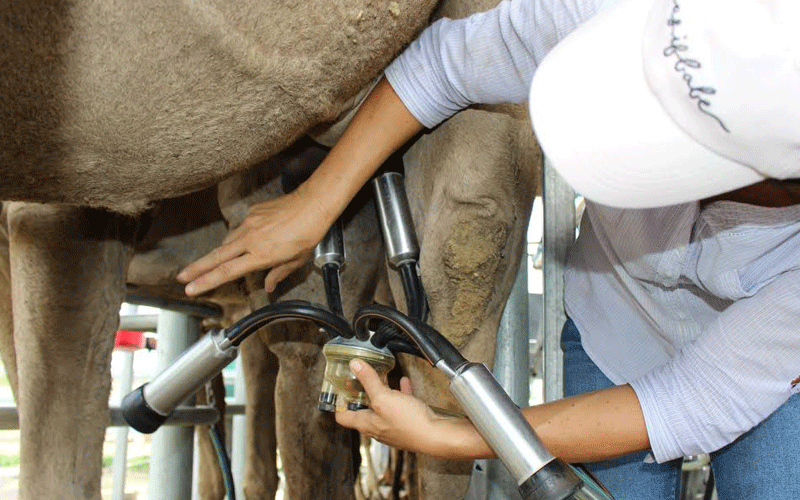Experts call for policies to regulate camel milk sector
By Mwangi Mumero, July 14, 2020Camel milk traders and experts are lobbying the government to create a policy framework and quality control measures that will enhance the sale of the product and result in immediate benefits to farmers.
They argue inclusion of camel milk as a key product serves to bring organised market chain and production, improved nutrition, reduce of hazards in milk and dairy products as well as facilitate planning, organisation and decision making for the value chain actors for the sustainability of the industry.
Kenya has the fifth largest camel herd in the world estimated to number 1.06 million traditionally kept by the Somali, Rendille, Gabbra and Turkana communities living in the country’s harshest arid and semi-arid lands of North and North-Eastern Kenya. Garissa county alone’s annual milk production stands at about 70 to 90 million litres.
However, most of this is only hawked, seeing that there is no formal regulation by the government.
Regionally, demand for camel milk in East Africa continues to rise even with low production levels.
“We cannot meet the demand for camel milk in urban centres such as Nairobi.
Most of the camel milk produced locally is consumed by the pastoralist communities, and little is marketed through outlets such as supermarkets in the cities where demand remains high,” says Jamal Warsame, a camel milk producer in Isiolo county.
Warsame has 100 camels with each producing seven to eight litres of milk per day. Each day, he sells 500 litres, mainly to supermarkets.
The Kenya Camel Association (KCA) notes that a yearly turnover of camel milk sales under the association has surpassed Sh10 billion sourced from about 3.3 million camels being grazed in various parts of the country.
Reforms initiated by the government will boost sales and earnings from camel products, “Tax breaks will allow farmers and processors to enter the camel products market and boost the sub-sector.
Sale of live animals to Egypt and Saudi Arabia will also be boosted,” asserts KCA chairman Khalif Abbey.
Abey further underscored the huge post-milking loss, which averages 70 to 85 per cent due to milk evaporation, spoilage due to high temperatures following poor storage.
Initially, most of the world’s total produced camel milk was consumed in the Middle East and Africa region, but with a rise in awareness the demand for camel milk is thriving internationally, with demand in China and North America rising tremendously.
However, experts note that about 70 per cent of camel milk is consumed by camel owners and never reaches the market.
Yet the milk is highly sought after for its anti-inflammatory, strong protective proteins, anti-microbial and nutritious value and works well for people are lactose intolerant.
Rich in iron, copper, sodium, potassium, magnesium, Vitamins A and C, development of new camel milk-based products such as baby food, confectionery and others is a key trend in the global camel milk market.
The increasing popularity of camel milk among diabetic patients and endorsement by celebrities are several other trends in the global camel milk market.
Prof George Gitau of the College of Veterinary Medicine at the University of Nairobi, says the camel can withstand climate change and are of vital importance to marginalised communities in Northern Kenya.
“Camels are browsers and feed on twigs and leaves high above the ground and, therefore, do not compete for feed with cattle and sheep.
They are key to reducing poverty in arid regions,” he noted during a recent virtual discussion to mark the World Camel Day.
For pastoralist to maximise profits from camel milk and other products, Prof Gitau says the government can improve the transport of milk to reach the market as well as assist in milk collection from herders.
“Milk handling and hygiene remain critical to ensure quality standards are adhered to.
Farmers are currently suffering from the effects of Covid-19 pandemic and the government should cushion them at this time,” he added.
The Food and Agriculture Organisation (FAO) notes that for African nations to benefit from the emerging camel products demand, countries must invest more in the camel sub-sector and in the value chains.
“Currently, scientific knowledge is lacking with few people qualified to carry out research on camels in the continent.
Governments have few strategies in genetic improvement through selection and breeding,” observed Prof Mohammed Bengoumi, a Tunisia-based FAO camel expert.
He urges governments to increase their capacity, enhance value chains and improve markets in the camel products such as milk and wool.
Bengoumi noted that in the recent past, there has been 6.3 per cent growth per year in camel milk demand compared to cow’s milk (2.1 per cent), goat milk (three per cent) and sheep milk (two per cent).
He said production can also be increased through private sector involvement.
